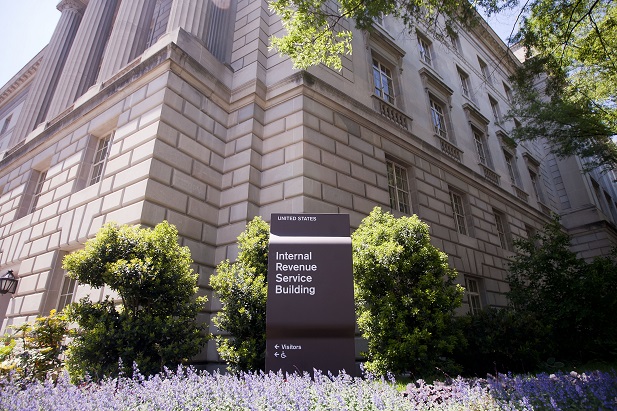 (Photo: Diego M. Radzinschi/THE NATIONAL LAW JOURNAL)
(Photo: Diego M. Radzinschi/THE NATIONAL LAW JOURNAL)
The IRS recently posted 14 questions and answers for plan sponsors and third-party administrators regarding coronavirus-related loans and distributions, but they do not answer all of the questions posed by the Coronavirus Aid, Relief, and Economic Security Act (CARES Act) retirement plan provisions. While the wait for formal guidance continues, the Q&As confirm that each of the distribution and loan provisions are optional for employers to adopt (or not adopt).
The Q&As also indicate that the formal guidance on distribution and loan provisions should be released in the near future, and that the IRS anticipates this will generally apply the principles set forth in Notice 2005-92 regarding the Katrina Emergency Tax Relief Act of 2005 (KETRA).
Guidance regarding coronavirus-related distributions (CRDs)
Under Section 2202 of the CARES Act, a "qualified individual" may receive special tax treatment for distributions of up to $100,000 from an eligible retirement plan from January 1, 2020, through December 30, 2020. Eligible retirement plans include qualified plans under Code Sections 401(a), 401(k) or 403(a), tax-sheltered annuity plans under Code Section 403(b), eligible deferred compensation plans maintained by governmental employers under Code Section 457(b), and individual retirement accounts/annuities (IRAs) under Code Section 408.
CRDs include any distribution from such plans to a "qualified individual" during the applicable period (so long as the total does not exceed $100,000), regardless of whether the plan sponsor treats the distribution as a CRD.
CRDs may be taxed ratably over three tax years (or 100% in the year of distribution, at the qualified individual's election), they may be repaid to any eligible retirement plan during the three-year period beginning on the date of the distribution, and they are not subject to the 10% tax on early distributions.
Plan sponsors may allow qualified individuals to take "in-service" CRDs from 401(k) plans, 403(b) plans, and 457(b) plans at any age — notwithstanding the normal withdrawal restrictions that might otherwise prohibit distributions of certain contributions prior to the participant's attainment of age 59½ or severance from employment.
Plan sponsors generally have until the end of the 2022 plan year to adopt amendments reflecting the CARES Act provisions that the sponsor chooses to adopt.
The Q&As reiterate the statutory definition of "qualified individual," but also note that the IRS/Treasury Department may issue guidance that expands the list of factors taken into account in determining whether an individual is a qualified individual as a result of experiencing adverse financial consequences due to the coronavirus.
They also clarify that, although 401(k), 403(b) and governmental 457(b) plans may be amended to allow qualified individuals to take "in-service" CRDs during the 2020 calendar year even if they have not attained age 59½, there is no similar relief for money purchase plans. Thus, money purchase plans may not allow "in-service" distributions prior to age 59½.
In addition, the Q&As clarify that the CARES Act does not provide any relief from the spousal consent requirements, if such requirements otherwise apply to distributions or loans under the plan.
Although the CARES Act provides that the administrator of an eligible retirement plan may rely on an individual's certification that the individual satisfies the conditions to be a "qualified" individual for purposes of making and reporting a distribution as a CRD) the Q&As provide that the administrator cannot rely on such certification if it has "actual knowledge" to the contrary.
While this limitation is not specified in the Act, it is similar to the current rule for reliance on a participant's certification that a proposed hardship distribution does not exceed the "amount necessary" to satisfy the participant's immediate and heavy financial need.
Finally, the Q&As clarify that, although it is "anticipated" that most plans will accept repayments of CRDs, plans are not "required" to do so, even if they allow in-service CRDs during 2020. Repayments of CRDs are to be treated as rollover contributions, and plans my dictate whether they will accept rollovers, and if so, what specific types of rollovers will be accepted.
Guidance regarding loan limits and loan repayments
Section 2202 of the CARES Act also allows eligible retirement plans to increase the amount that "qualified individuals" may borrow up to $100,000 or 100% of the participant's vested account balance during the 180-day period that began on March 27, 2020, and ends on September 22, 2020, and allows those qualified individuals to defer loan payments that would otherwise be due between March 27, 2020, and December 31, 2020.
The Q&As provide very little guidance regarding these loan provisions, even though the loan deferment provision has generated the most questions by plan sponsors and recordkeepers.
As noted above, the guidance merely indicates that the IRS is formulating guidance, and that it anticipates that such guidance will apply the principals set forth in IRS Notice 2005-92, which provided guidance on the application of a similar, but not identical, loan deferment provision under KETRA.
Notice 2005-92 created a "safe harbor" for satisfying Section 103(b) of KETRA. Under that safe harbor, the statute was deemed to be satisfied if a qualified individual's obligation to repay a plan loan was suspended during the statutory "suspension period." The safe harbor provided that loan payments must resume upon the end of the suspension period, and that the term of the loan may be extended by the duration of the suspension period.
Based on this guidance, we might anticipate guidance that requires loan payments to commence in January of 2021 since the "suspension period" under the CARES Act ends on December 31, 2020, and for the loan to be extended for up to nine months — the maximum suspension period.
However, there are still many unanswered questions regarding how and when loan payments must be reamortized when payments resume. Some aspects of Notice 2005-92 cannot be applied to the CARES Act, because the suspension period under KETRA was almost 18 months, whereas the suspension period under the CARES Act is only nine months. And, we don't know yet how the IRS will reconcile the nine-month suspension period with the statutory 12-month deferment of each payment during that suspension period.
We can only hope that the IRS issues formal guidance addressing both CRDs and the CARES Act loan provisions as quickly as possible.
 Rob Browning is of counsel at Spencer Fane LLP in the firm's Kansas City, Missouri office
Rob Browning is of counsel at Spencer Fane LLP in the firm's Kansas City, Missouri office
© 2025 ALM Global, LLC, All Rights Reserved. Request academic re-use from www.copyright.com. All other uses, submit a request to [email protected]. For more information visit Asset & Logo Licensing.







